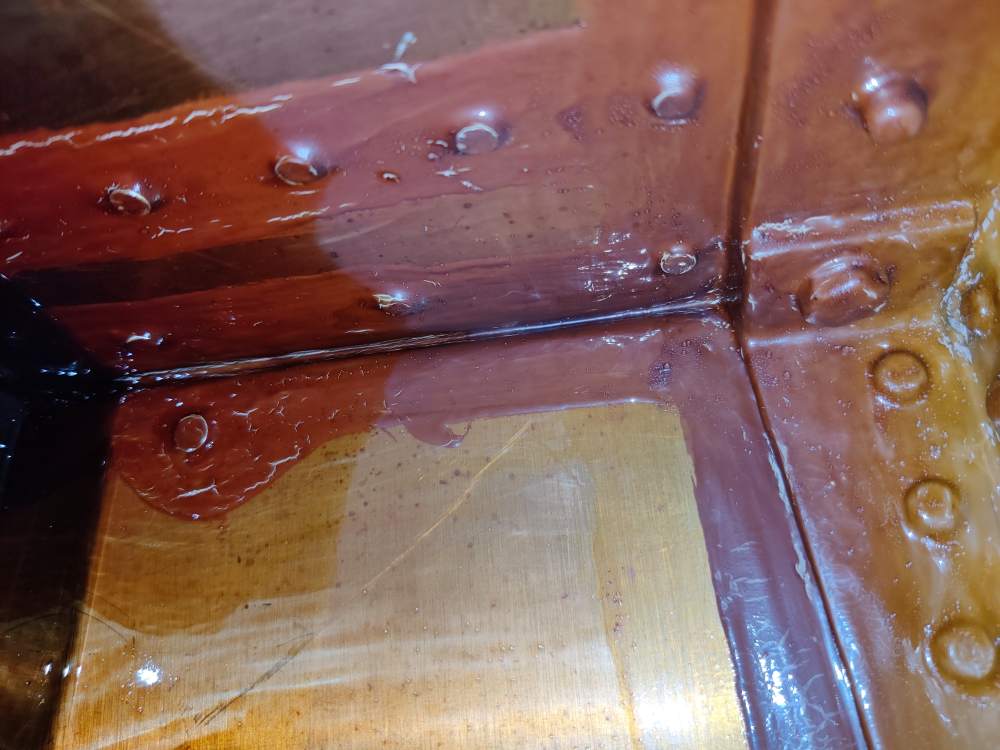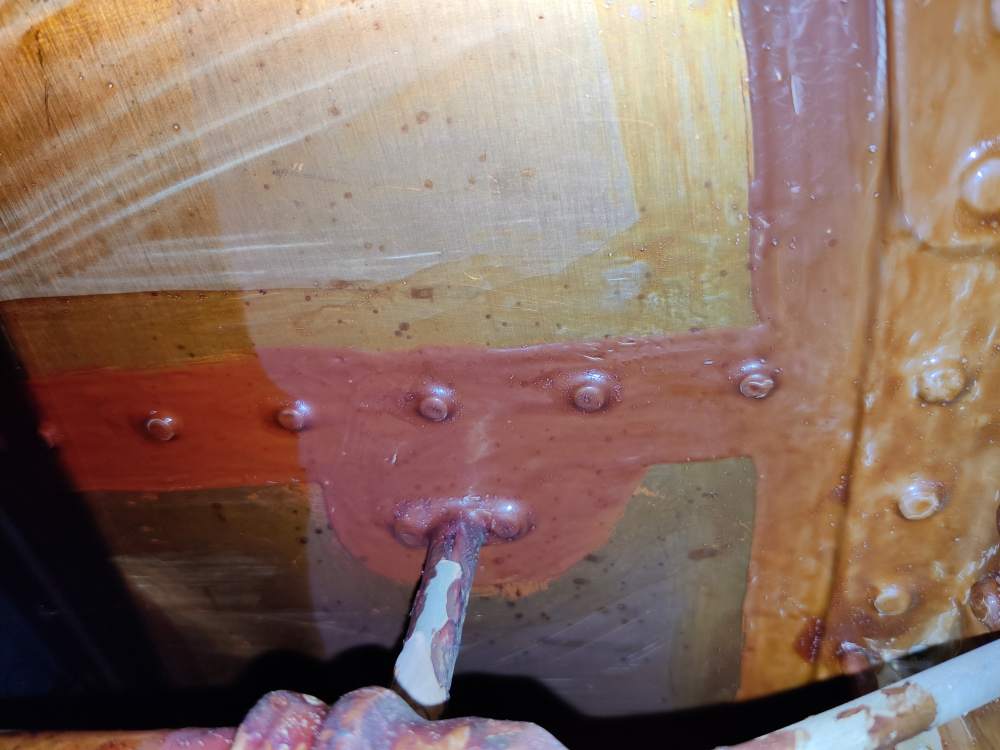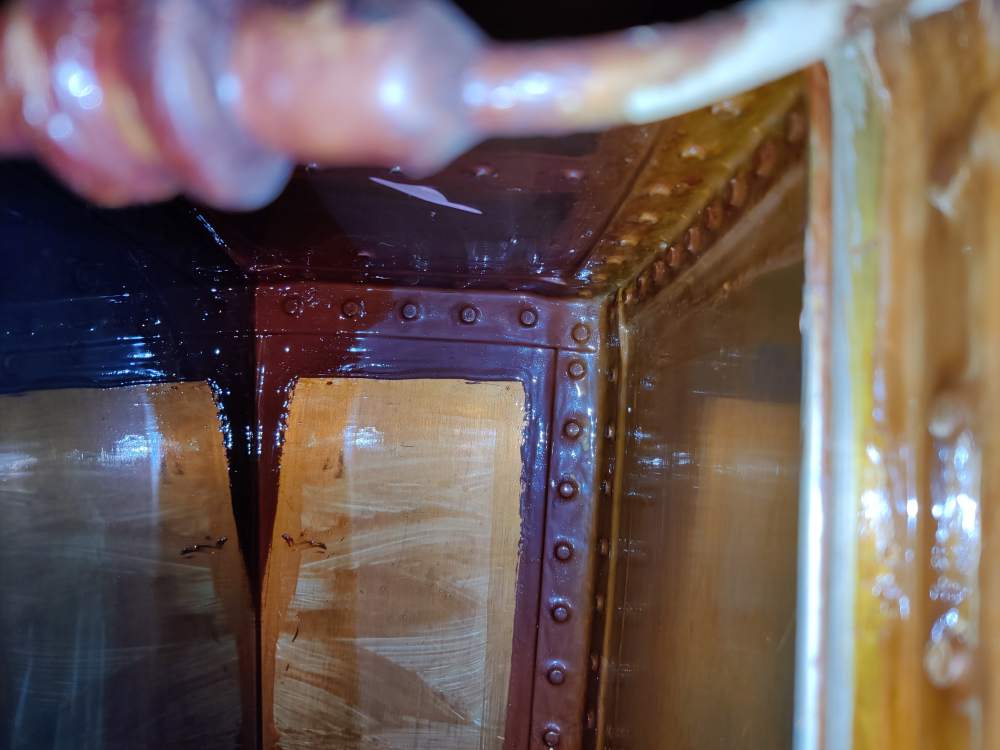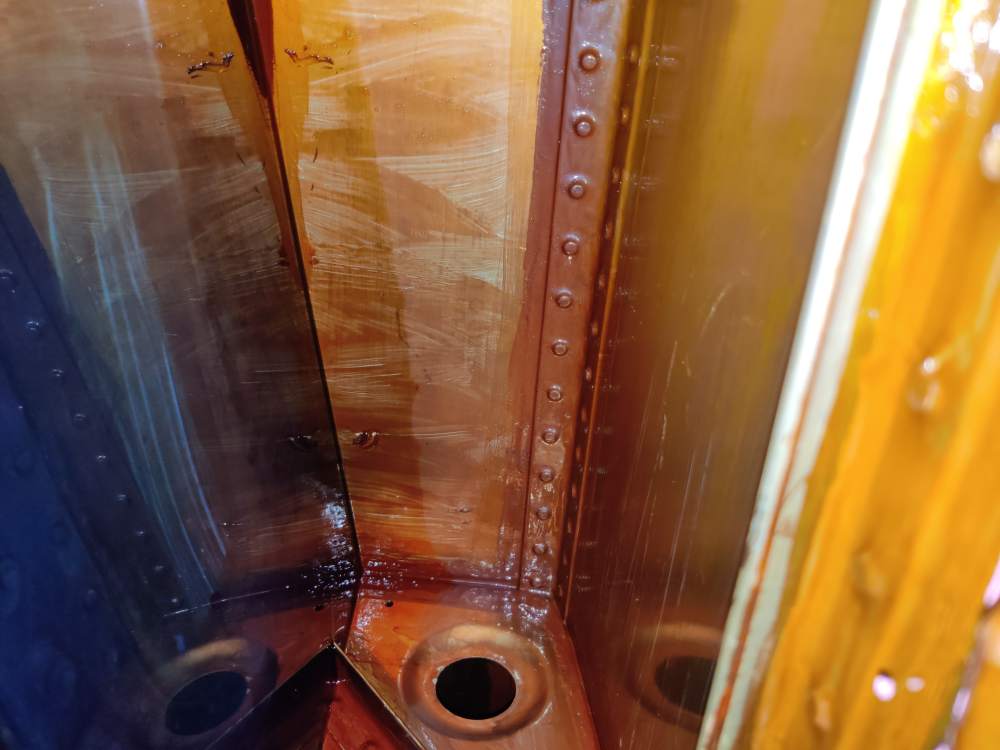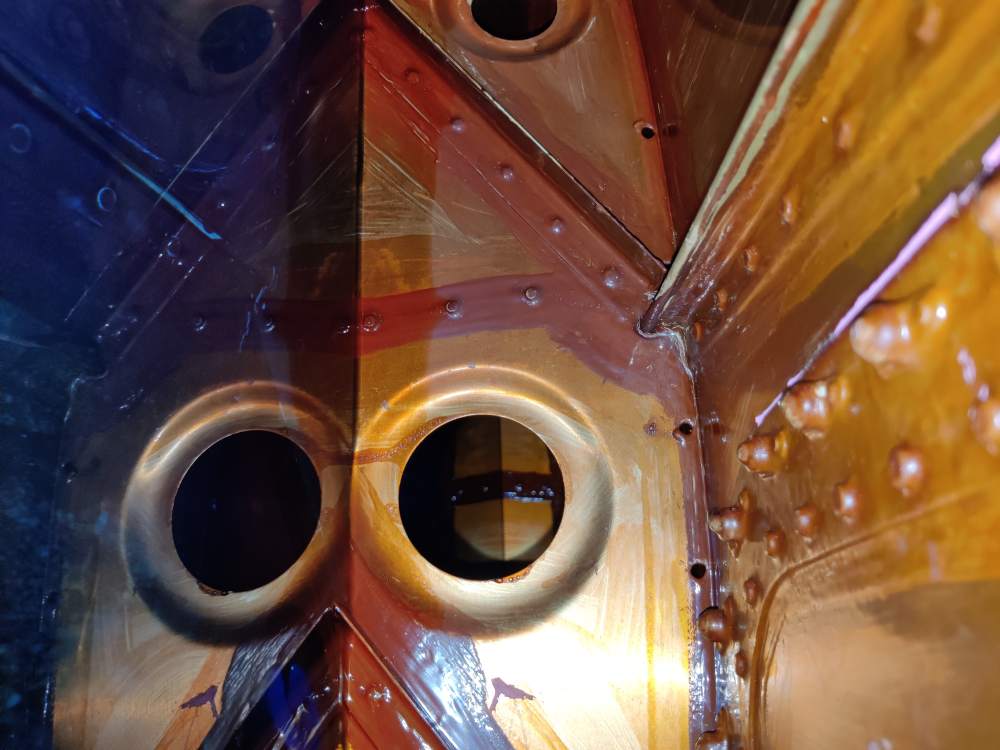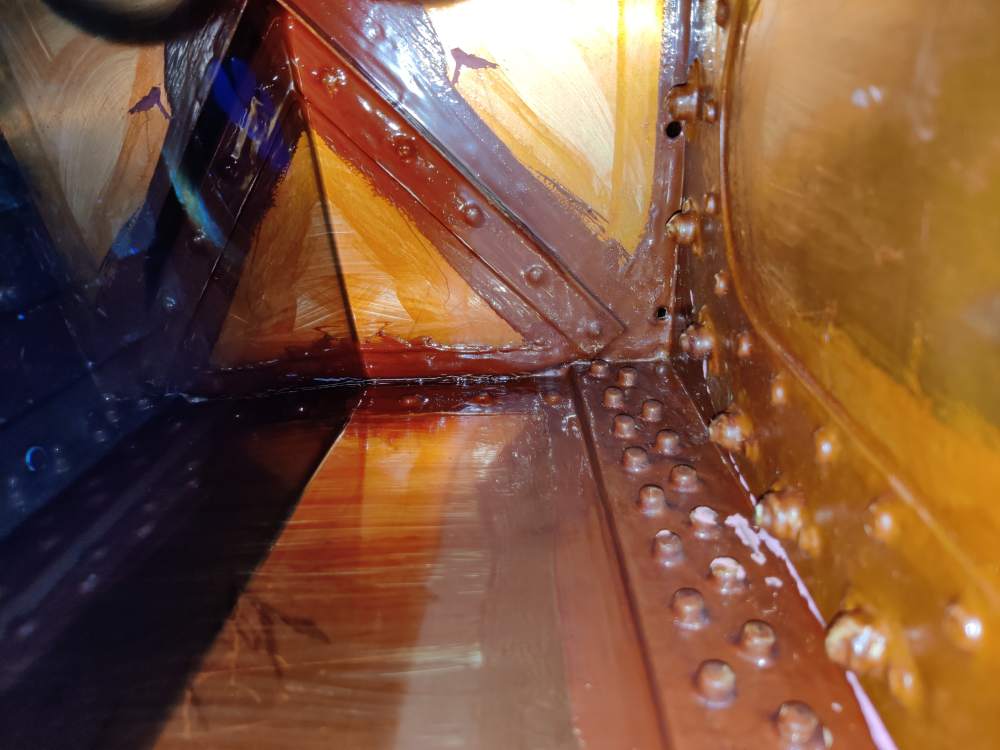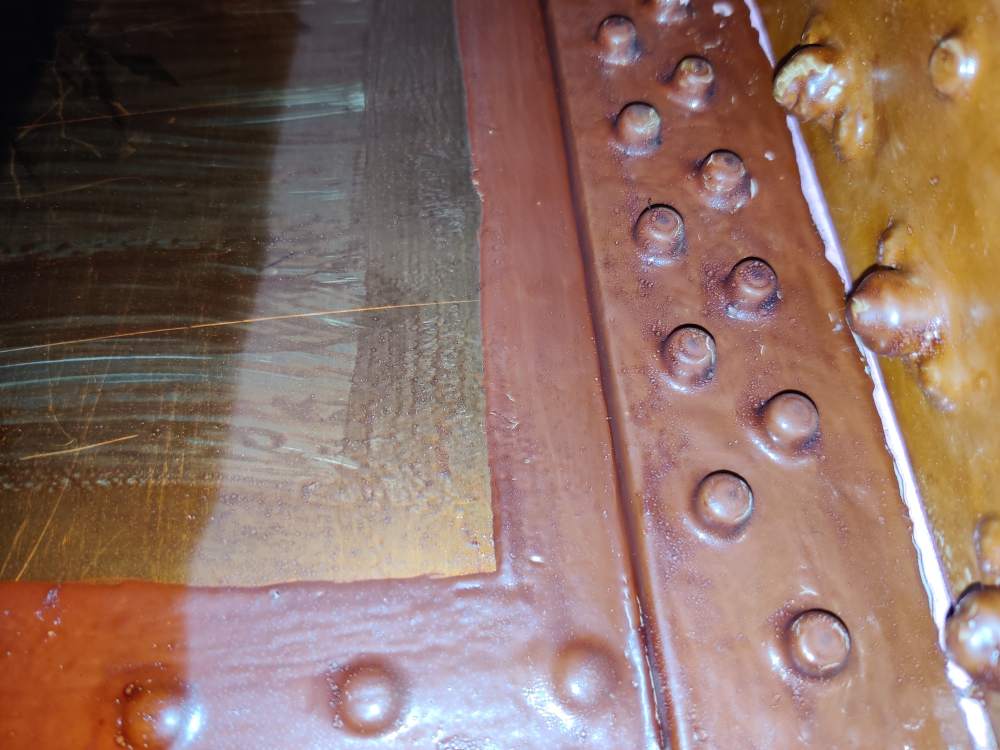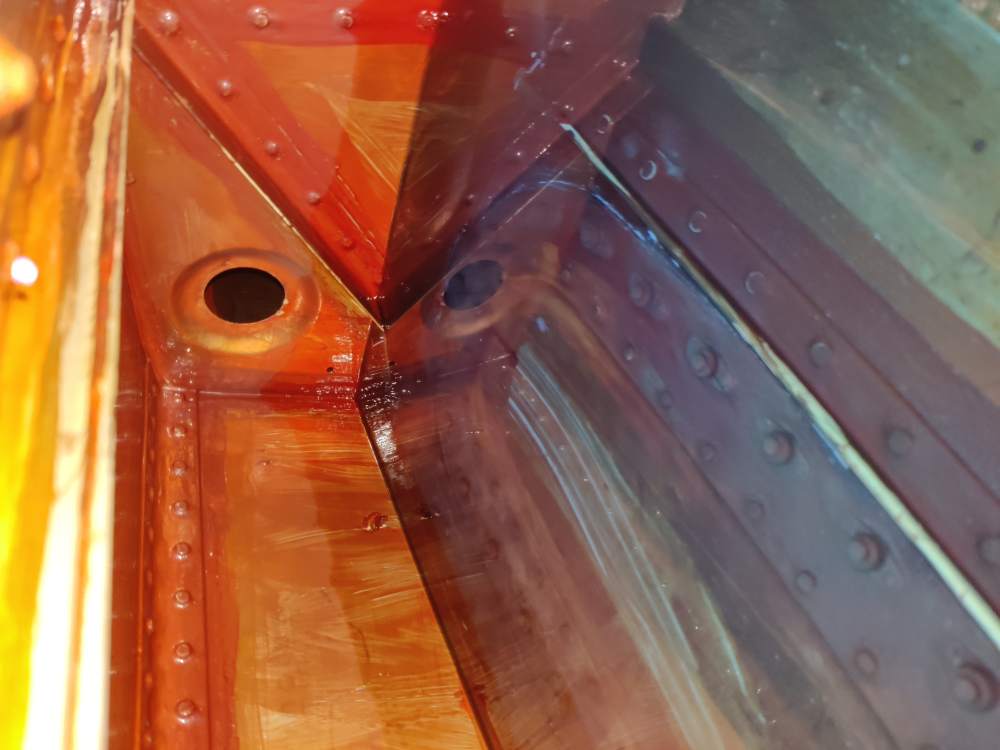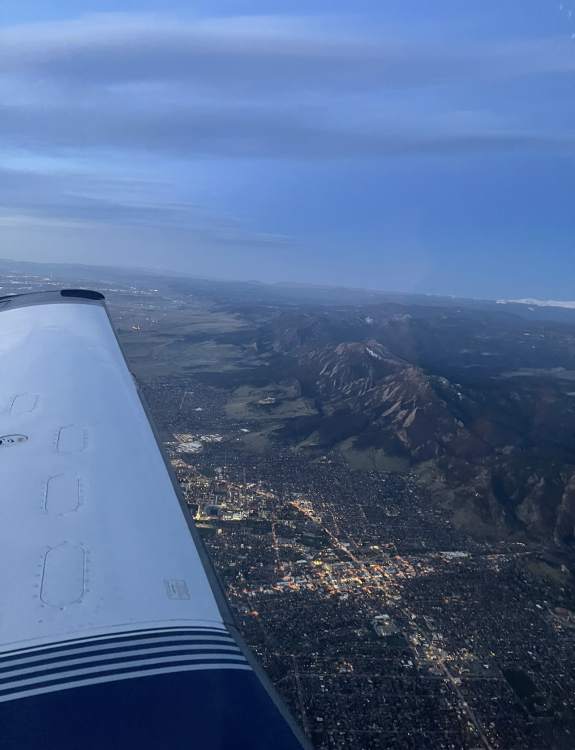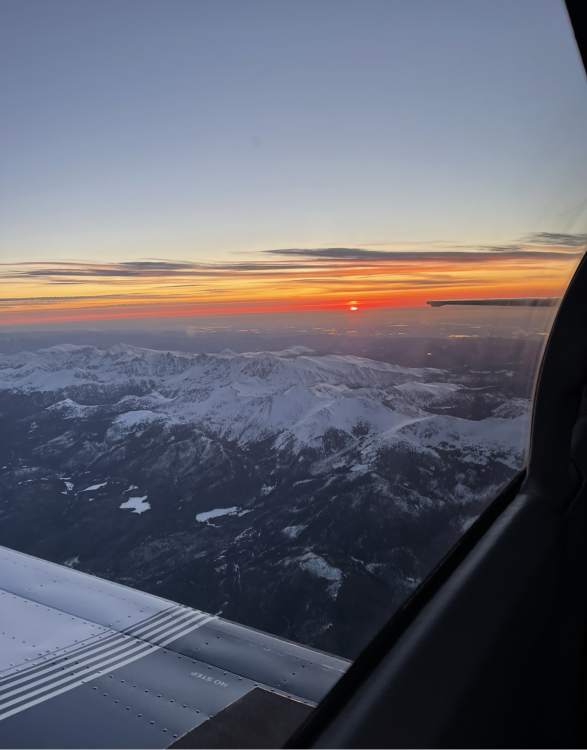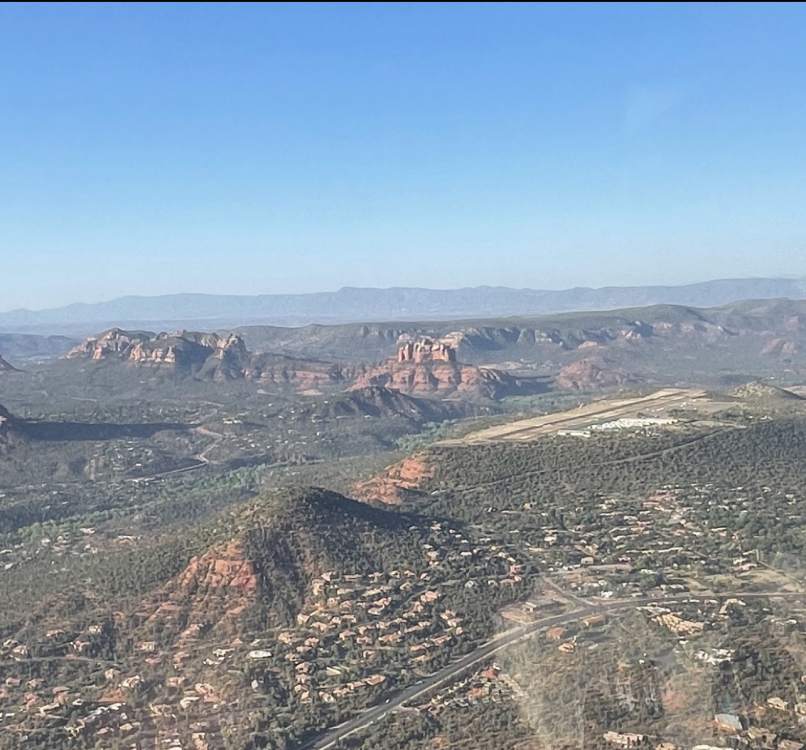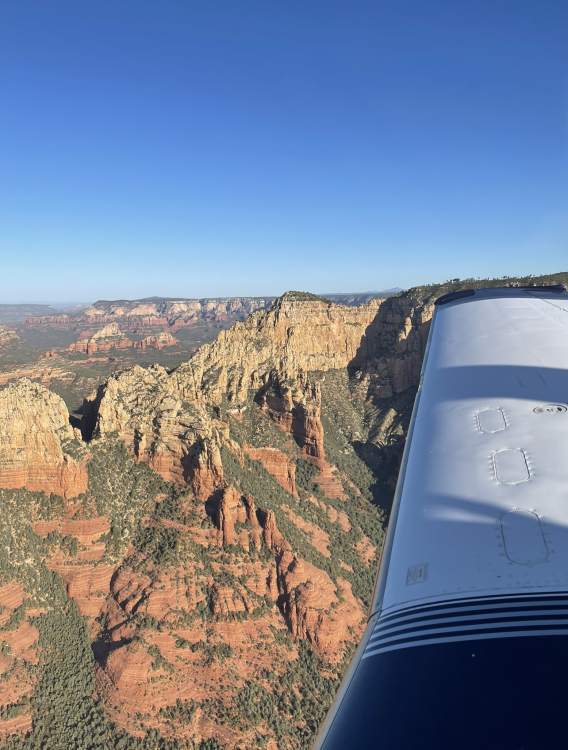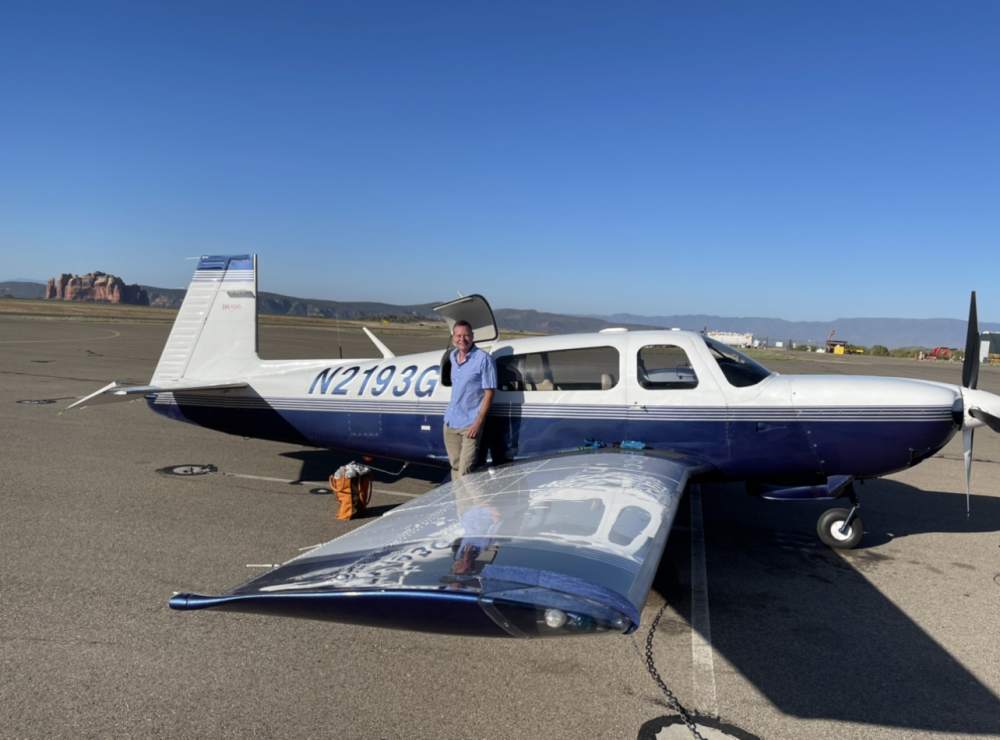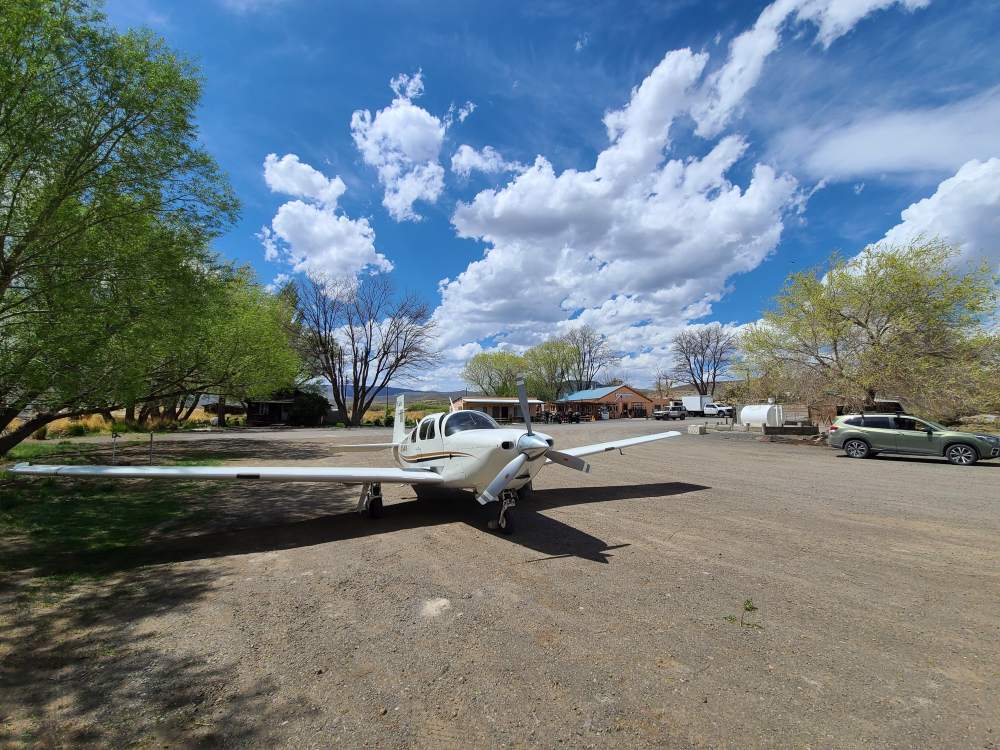Leaderboard
Popular Content
Showing content with the highest reputation on 05/19/2021 in all areas
-
Anthony is speaking the truth. you have a very large blade angle increase as you transition from climb to cruise. Did the issue start after the propeller came back from O/H? Little trouble shooting for ya. Pull propeller control all the way out(engine off) an have yourself an 2 of the beefier ramp rats you can find an manually move all 3 blade together to High pitch. While doing so be mindful of any catches or rough spots in the actuation. If the Blade Preload is to tight on 1 or 2 blades, then you will have a bit of a blade tracking issue for a couple seconds till the larger adjustment is made. Once the big addition bit of blade angle is achieved then the smaller adjustments your Governor makes really aren’t detectable. In the photo you will see Round plates with a smiley face on the butts of the blades. Those are the pre-load place that are adjusted individually between the blades. If one is to tight it will allow the other two blades to move more freely yielding a slight blade angle issue for just a second. Once the angle is adjusted then the blades wind themselves back in sync6 points
-
I have a Garmin transponder, dual G5's, a GNC355, GFC500 currently getting installed, but I put the 450B in as my audio panel. I love it, can't say enough about it. The isolation modes, co-pilot as Pax setting so my son doesn't have to hear the radios when it's just the two of us flying and he wants to listen to music, two Bluetooth inputs plus direct audio input so everyone can listen to something different, the setting where you hear one radio on one side and the other from a virtually different location (I can't remember what it's called), making crystal clear calls on my phone through the headset, and recently found that if I'm receiving a call on my phone the phone number pops up on the 450B display like caller ID and you can answer or end the call with the soft keys on the audio panel. I know there are more functions, but those are just a few. I know Paul @gsxrpilot is a fan of the 450B as well.5 points
-
4 points
-
I am my A&P/IA/Avionics guy/oil changer/aircraft cleaner/fueler. So yes...me, myself and I have a pretty amazing relationship. Not sure how good of advice I give myself though. There was this one time back in the 80s when I told myself "That girl is beautiful", you should go buy her a drink! Woke up the next morning and was pretty disappointed with that advice....4 points
-
I used to be based out of BFI with an M20F and have crossed the mountains a lot in different directions including trips to and from Oshkosh and Calgary during late July and August. I have never had a problem getting into the teens for cruse flight. I like to go non-stop over both the Cascades and Rocky Mountains in one stop to avoid landing and having to re-climb. My go to stop is usually BIL after Seattle. For IFR just follow T268 which is a pretty easy route to follow and can be flown at 12k heading west. This route also follows a lot of roads and can also be used if you do want to make stops at GEG/COE/HLN/MSO. Beware of icing into and out of Seattle even during July, I picked up icing over the cascades on the way to Oshkosh in 2019. If you do go VFR in an attempt to stay lower expect to be out of ATC radio and radar range for a lot of the crossings. Also summer and fall have been very bad for forest fires so often climbing into the teens is the only way to get out of the smoke. Be prepared for that and monitor the TFRs.4 points
-
4 points
-
I hope you can share more information as you have this looked at. The situation is a bit odd -- both instruments should have their own AHRS and pitot/static connections making them fully independent. It is possible, as you mentioned software, that with both running the same something could trigger a bug that would affect both in the same way. A test I would've liked to have seen would be pulling the breaker on one of them to see if it's the cross-communication that caused them to freak out. A situation I can see is where they both thought the other had failed and were arguing about what to do about it. Lacking a 3rd to establish quorum they gave up.3 points
-
I departed KMTN on Sunday, and the ATIS broadcast had the TFR on the broadcast, which I thought was helpful even though I was not going that direction and I was IFR anyway. In that area, I am always IFR or at the very least flight followed. One of the funniest of these I heard was on guard as I was working my way down the east coast. It was a SFRA violation and the interceptor was trying to get hold of the aircraft for about 10 minutes. Then you hear this: Aircraft: Hello? This is N12345 are you trying to get me? Interceptor: Affirmitive, you are in violation of the Washington DC SFRA, follow me Aircraft: I'm a student pilot on cross country from Winchester......I'm lost.....I want to return to Winchester Interceptor: Negative...We are landing you at Fredrickburg Aircraft: But...but I want to go back to Winchester!3 points
-
I had the same problem and spoke with @Mscheuer at an AOPA flyin. He provided a setup manual that explains how to adjust the limits on the PMA450B. It involves removing the unit, changing a jumper and reinstalling the unit. You then get a set of menus that let you adjust several settings including the automatic squelch. I lowered mine slightly and it works perfectly for us now. I am sure if you contact Mark he will explain or provide you the documentation on how to change it. I still have the document but since it isn't mine I'm not comfortable sharing it without permission from PS. Jim3 points
-
I have the 450B with dual Bluetooth. I use the second BT source way more than I would've expected to. I also love the IntelliAudio. It really makes a massive difference. Garmin has there stuff down, but the real king of the audio panels is PS. There customer service is also amazing. @Mscheuer will probably be around soon.3 points
-
About a month ago we flew up to Redding in Northern California for my granddaughter's baptism. To escape the LA Basin we headed east to find clear skies and get on top of the marine layer. I'm still working on the IFR rating or it would have been an easy climb up through it.... I didn't have cameras going but flying past Mt Wilson with the marine layer pushed right up against the mountain I pulled out my phone for this quick video.3 points
-
3 points
-
In searching online for an Excel version of the KOCH chart I came across this website. You can put the information in or just put in the Airport Identifier. I don't know how it works on an iPhone but on an Android you can go to it in Chrome and pin it to one of your home screens. https://www.takeofflanding.com/ Example of what you see on the website:3 points
-
How to vote in between „good enough“ and „amazing“? As a non-native speaker the gap between those options feels pretty wide.. Regards, m2 points
-
So, Paul is right that the solution is to put the settings back where they were, but it is a little different in the 231 than in the 252. The 252 has a fully automatic controller, so if you set MP at a number, let’s say at Paul’s 25”, then you can enrich or lean the mixture with the fuel knob and the wastegate controller will work hard to maintain 25”. That is not what happens in the 231. There is an interlink between the MP and the fuel flow in the 231, and the wastegate controller does not hold a set MP. What the interlink does, is to try to maintain a given fuel/air ratio once you have made your power setting. So if you set the power at 25” and 9.5 GPH, and then you increase the MP to 32”, the fuel flow will rise with it to try to keep the same fuel air ratio you had at 25/9.5. The relationship is a little weaker fuel flow drifts for some reason, the interlink is still there but it does not appear to me that the MP will change if fuel flow drifts, as much as the fuel flow will change if MP drifts. So what you need to do is to make sure both the fuel flow and the MP go back where they were. In my plane, if the MP drifts it is usually good enough to just put the MP back where it was and the fuel flow will normally go with it. If the fuel flow drifts and the MP has not moved, or not moved very much, then put the fuel flow back where it was, but always aim to keep both fuel flow and MP at the initial settings that you found. I haven’t used either the lean of peak or the rich of peak function in the JPI for years. The lean of peak function, in particular, is very inaccurate. What it tries to do, is identify the last cylinder to peak as you pull the mixture from a rich of peak power setting, across peak, to a lean of peak setting. The problem in the 231 is that MP is moving with the fuel flow when you do that, so what you are doing is not leaning the mixture out but rather just reducing the power setting that you started with. The JPI will report a peak, but too much changing is going on, that peak is just not valid. I found a setting that I know is around 20 degrees lean of peak and keeps the TIT at or under 1600. I just use that setting. It works.2 points
-
AHRS is Attitude and Heading Reference System. ADAHRS is Air Data, Attitude, and Heading Reference System that it would be a part of. If you lose airspeed, it should X out the airspeed, but not the attitude. There's another thread here about a guy who had a problem with his airspeed not working (I think it was the pitot cover was on?) and he had attitude information, which enough evidence for me to say "if the pitot/static stops working, attitude will continue on"... unless there is software issue that causes the attitude to fail if the airspeed sensor does. In your case, the chances of both having hardware failures at the same time is possible, but pretty unlikely. Edit: Here is the link where the video is that shows the twin 275s not having airspeed due to pitot/static cover and the devices remain functional for attitude.2 points
-
You just made his point about 2020 not being a representative year . . . .2 points
-
I'll bet it's just pads. If the pads are gone down to the metal, the piston will push out too far and dump fluid. I flew mine to Texas that way as it was on it's way to annual. JD showed me the pads, rivets, and half the backing plates all ground down. It was all going in the bin anyway and new to me, Ovation double puck brakes going on.2 points
-
Bad cam, bad plug, bad magneto, plugged injectors, bad fuel pump, low oil pressure, excellent fuel metering, detonation, etc2 points
-
2 points
-
2 points
-
2 points
-
@Cody Stallings This is very helpful- I will fool with it and provide feedback. Getting an oil change this week so I can have the guys at the shop help me with this. I acquired the plane in December and it received a heavy prebuy/annual. Prop was overhauled but no other engine or airframe work. The engine got new hoses but I don’t see how that would be relevant. the issue occurs at 2500rpm and the manifold pressure depends on the altitude at which I level off - I climb at 25 square until unachievable. Level off is anywhere from 4000 to 12000 and altitude has no impact on this phenomenon. What Cody is describing is most plausible. When this occurs, what is required to correct it, and is it causing faster wear or deterioration? Or does it not matter? I can live with it if it isn’t going to reduce prop life and would be costly or time consuming to resolve. thanks again-2 points
-
I finally did my “final” upgrade....I changed out the audio panel. All I can say is “wow” much of the time with my original king unit I had an alternator him sound ....and now it is crystal clear and concise....expensive, yes ....but it’s worth it. The integration of music through Bluetooth is spectacular2 points
-
Another nice feature on the display is that it shows the BT connected phone's battery status, which is more useful than I'd have thought.2 points
-
2 points
-
I have the PMA450B2, and it really is a kickass audio panel. The second BT link is more useful than I would have thought, and the degree of configurability is very nice to customize as well as work around failures or limitations in other equipment. I use the BT constantly as I just use my phone as a music source while travelling. I've done phone calls over it, too, which is especially useful on the ground for wx, clearance, etc. The display makes navigating the menus pretty easy. I don't have to mess with it much, but when I do it's nice to be able to get to the various features easily. My sole gripe with it is that microphone squelch is automatic, with no adjustment capability. Maybe it's the headset that I use for passengers, but some passengers, especially quiet-spoken ones, have to speak up more than they're often comfortable with to get the mic to break squelch. Other than that I like it a lot, and that doesn't seem to be that big of a deal and passengers usually adapt quickly. I have no experience with the GMA 345.2 points
-
I haven't used a 345 but I have heard good things about it. I have lots of time with the 340, 347, and 1347 (G1000). The 340 is a great basic audio panel. The 347 and 1347 have terrible intercoms. I've never been happy with them. That fact that Garmin continued to use them in the G1000 line turned me off to Garmin audio. Pretty much everything from PS is good, and like @carusoamstates the customer service is second to none. I'm excited because my 450B will be showing up via UPS tomorrow, thanks to @Avionics Source Martin Pauly and SoCal Flying Monkey have good videos on YouTube showcasing the features of the 450B. Cheers, Dan2 points
-
Yes, we should all be careful and not gear up our airplanes. But the reason being that it might increase everyone else's insurance rates a few dollars... is so far down the list of reasons that it's a complete waste of an otherwise good brain cell to even think about it. #firstworldproblems2 points
-
I have been reading the typical Cirrus cynical diatribes above with some mixture of amusement, disgust, and confusion. Here we are, as an ever diminishing GA population, bemoaning the lack of progress, stoic technology, and unwillingness for manufacturers to take a risk and better serve their markets. Yet, along comes Cirrus which has been successful beyond what any reasonable estimation would have been when they launched; they've bested all of their competitors...combined! But, rather than even a drip of praise we are regaled with denigrating comments such as, "thought like a scared spouse," and "pander to that irrational behavior". Maybe, just maybe, Cirrus actually analyzed, in an actual business sense (as opposed to wanton irrational speculation) as to what product would sell and grow the GA market...NAH, that couldn't be it <sarcasm> Then there's the barely veiled "no real pilot needs a chute (or now, the apparently popular slight, shute), and/or blaming bad decisions on the chute's presence. So, how many military pilots have one of these terrible devices strapped to their backs when they go flying (and, I'm not talking missions into battle)? It seems to me that common sense would say that if highly trained pilots, flying very well maintained aircraft, find that chutes provide a way to mitigate risk, then GA pilots in their machines might benefit as well. Ah, but THAT chute is strapped to their backs, not the plane's..and that makes all the difference, I guess <more sarcasm>. Let's throw in autopilots, GPS, and all glass for the ultimate in situational awareness and risk mitigation. Sure would think pilots with all that stuff may be making bad decisions because of having those items on board. Where's the Garmin bashing? But, that logic falls by the wayside, it would appear. Then we come to the plethora of 'statistics' where random unsupported numbers and speculative premises are tossed out as 'data', but only in the worst possible light; the unsupported nature of that speculation could just as easily be spun to support the use of chutes...but, you never are going to see that when Cirrus bashing is in full bloom! For equal hull values and pilot experience, I'd be curious how insurance rates for Cirrus weigh in. Oh, well. Cirrus keeps making money...and haters keep hating.2 points
-
Never No No With your turbo, altitude doesn't play into the equation. Or at least not for this conversation. Use lean find to discover the correct fuel flow for a given MP that puts you where you want to be LOP. Make note of those numbers. For me in my 252 a typical LOP setting was 25"/9.5gph. Once you know the numbers for your engine, you can skip the Lean Find feature and just go to those numbers. And if during a long flight, you notice the MP change or the FF change, just put it back. No need to run lean find.2 points
-
I agree with these old starters lasting forever with a little maintenance. I'm going to try to repair/overhaul this old starter. A few bucks for hopefully another 20 years of service sounds like a good deal. I haven't had an trouble with hot starts yet and the old starters seem to be more durable/serviceable than the new lightweight starters.1 point
-
Sorry never figured this one out it just went away. I think it might have been the cable.1 point
-
1 point
-
Been there, done that, no thanks again! Took full power at 40' msl to taxi after landing. Before takeoff, I walked the field and plotted my run to hit only the shallowest water. Left a few days later, solo, no bags and half fuel--rather long takeoff run. Wife met me with luggage a 45-minute drive away with several thousand feet of concrete and a fancy ramp and FBO.1 point
-
1 point
-
Ah good tip, I think you might be on to something. I was there when we calibrated the FF. I don't remember the numbers but I remember it being right in the middle of the allowable range. My A&P and I figured that was where we should leave it and we did, but I think you are right, to keep things a bit cooler on T/O it would be better have the fuel flow on the higher end of the allowable range. I will have to try that.1 point
-
I don't have the Drift 4K but have used the Drift Ghost X and been impressed with it. I get 4+ hours of battery life out of it. This is a video from it mounted under the wing. Skip ahead to about 30 minutes for some nice footage of the lights from container ships coming up through the marine layer. A bonus is that the N-Flight Cam cable that is for the GoPro Hero 3 will also work with the Drift Ghost X to pick up the radio/intercom on a recording. I did a write up a couple months ago in The Mooney Flyer about the different cameras I have used and the mounts. You can make a good underwing mount that goes on the tie-down for about $15. https://themooneyflyer.com/issues/2021-AprTMF.pdf - Look at the "Cameras, Mounts, and Cables Article1 point
-
Once again a rude reply that quoted me twice but totally ignores my premise. In reality the Cirrus is not a better, safer aircraft. It is an aircraft that is well marketed. Yes, Cirrus business model works. As in all sales situations what gets sold is PERCIEVED value. Real value is often ignored. Actual statistical data is not as important to sales as feelings. ‘Just as in the case of the Scion XB vs the Kia Soul. The best product lost to the best marketing plan. Oscar Meyer may not have the best product in the segment but you all can sing their song. American consumers buy what their told to. Even when spending a million dollars on a toy. And no, the pilot of N416DJ was not a real pilot. He was an example of Cirrus training and marketing. The training just can’t seem to overcome the marketing. Damned if you do damned if you don’t.1 point
-
I ran in to this literally just the other day. This past Saturday, I was flying back on the last leg of a flight, I had a 2 inch drop of manifold pressure in cruise followed by intense engine roughness. Look to the engine monitor, #1 Normal (29X CHT, 14XX EGT), #2 Normal (29X CHT, 14XX EGT), #3 Climbing (397 CHT, 1550 EGT), #4 Normal (29X CHT, 14XX EGT). Quickly looked outside for options, 60 foot pines as far as the eye can see. The engine monitor allowed me to safely work the problem. After landing, I knew it was cylinder #3 and I suspected due to the rise in temperature and the way it behaved with changes in mixture that it was a fuel related problem. Pulled the injector and found it to be clogged, which lead to this post Clogged injectors, amber colored particulate in fuel, no tank leaks - Vintage Mooneys (pre-J models) - Mooneyspace.com - A community for Mooney aircraft owners and enthusiasts I would say an engine monitor is a MUST HAVE on a new to you airplane that you may not trust. It also makes it far easier to diagnose issues that pop up that with out it you may spend weeks or months chasing. Will it make your engine last longer? Its debatable, but it will help you make more informed decisions about how you operate your engine and may prevent your engine from becoming an outlier. In short, find a good airplane, if it has an engine monitor, great. If it doesn't have one, just spend the money and install a primary. I am partial to the CGR-30 and GI-275 EIS but that is a different story.1 point
-
They may not increase longevity but if two owners go into a shop: First owner says I have what appears to be a misfiring plug on cylinder #4, the second tells them his engine doesn’t sound right...which one will get out quickly and less expensively?1 point
-
The narrowest part of the Rockies is further north. But regardless, it' pretty easy to follow the roads through the mountains. If you're sight seeing along the route, KRAP is good for Mount Rushmore, then fly by Devils Tower in Wyoming. Going from there to KWYS is a good way to see Yellowstone from the air. The Grand Prismatic never disappoints. WYS is 6650 MSL but with plenty of room. I took off out of there at max gross in July. Just plan to take off in the morning when it's cool, and there is plenty of room to circle over the field until you're at a comfortable altitude. It's a short flight from there to KGPI. And you can stay over wide valleys the whole way. With just a little bit of route planning and good weather, your Mooney is just fine for flying through the mountains to the west. And nice days are the norm in the summertime.1 point
-
Hard feelings are often shared... There is a running count of how many Mooneys have had GU landings each week.... Most often, it is Mooney pilots that are not members of MS... Insurance rates have gone up over the last couple of years... and insurance companies were happy to mention that GU landings are part of that increase... It is probably 3$ for everyone... where the increases were more in line with $300... but, there are entirely different reasons for the increase.... the 737 Max took some blame for GA insurance increases too... the two big planes, and loss of hundreds of lives... completely dwarf GA losses... And half of those losses... really didn’t have to happen... same problem, different day.. There are a number of challenges that Mooney pilots are going to endure... it is important to know about these things some how... I recommend joining MS... and become part of the conversation... it takes the fear out of things before they happen... Finding Jerry and Alan in a pre-MS environment was not easy... a friend of a friend knew something about Jerry’s business... it took me a month to make contact... There are many strategies and pieces of hardware to minimize the risk of having another GU landing... read about them...share them... Make the change to improve your odds of not having another.... If following the standard procedures often taught with Transition Training.... There are three Gumps checks.... where the G is for gear.... you have three opportunities to undo a simple omission... There is a green light to indicate the gear and the ship is ready for landing.... There is this horrible droning Bee buzzing in your ear above your head.... so distracting, you feel uneasy about landing while that is going on... Share with your friend... the word ‘distraction’... this is the word that gets used to describe how a good pilot can miss so many cues... It is proof... GU landings happen to human beings... because, they are human... There are quite a few things that get covered in Transition Training... The GU landing is the barely important one... there are a few more important than that... If you think scraping the belly is expensive... review the syllabus for TT... +1 For Alan giving so much detail related to GU repairs... PP thoughts only, not a mechanic... Best regards, -a-1 point
-
1 point
-
Did you run that far LOP just to test it or do you routinely operate there? That would be past the minimum BSFC on most engines. Sweet spot is usually around 50F.1 point
-
It ended up being the antenna. The avionics guy said it before I finished my sentence. Has worked fine since.1 point
-
1 point
-
Got to go on a trip out to moab and bend, and while I was there, stopped at a couple uncharted strips. First one was fields for the second time in southern oregon. Second one was later today at panoche valley. A smaller 2000ft grass/gravel runway in central california just south of mercy hot springs.1 point
-
Wish we could make that AD go away ( and I don’t mean by spending thousands on a new unit) !1 point
-
Check the useful load of the planes you are looking at compared to yours and then consider how big the 6 & 7 year old will get and how much fuel you need to make the flights you want to make. I like a Mooney as much as the next guy on here, but if I had a plane with the kinks worked out already that was a known quantity, 4 gph would not convince me to sell it and switch to something else. Now, if you want to switch because a Mooney is way cooler and more fun than a Cessna - welcome to the club. You've found the right place.1 point





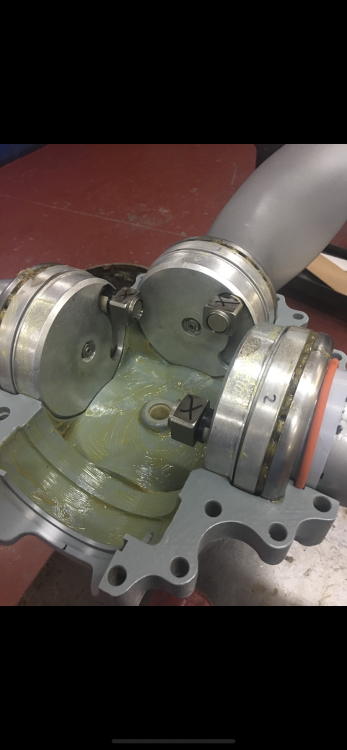


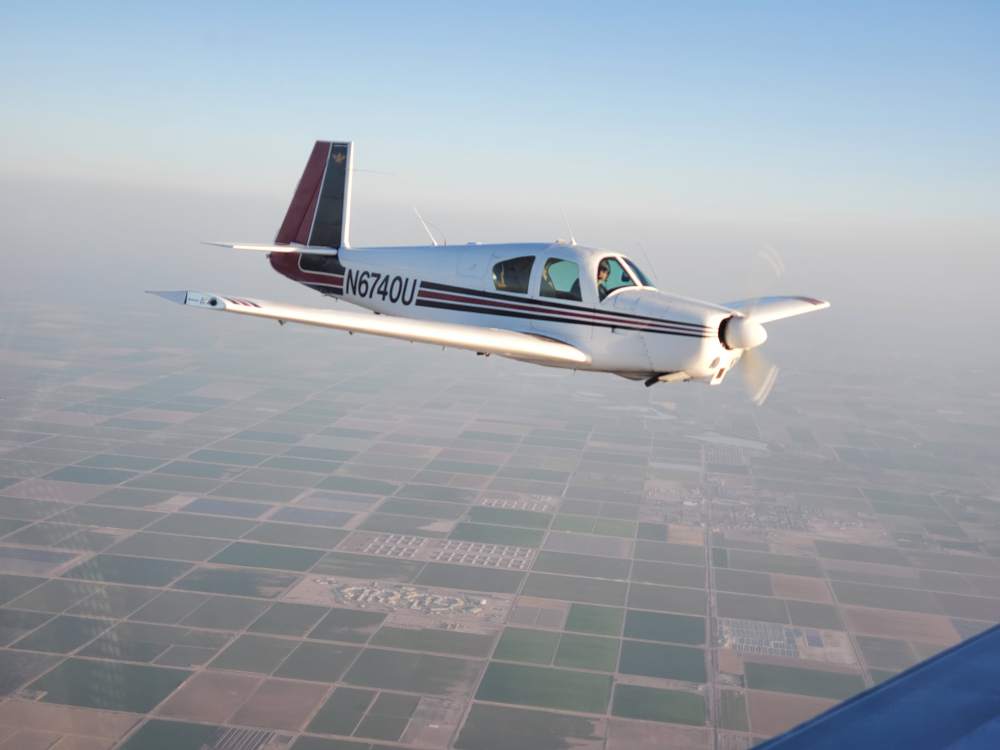
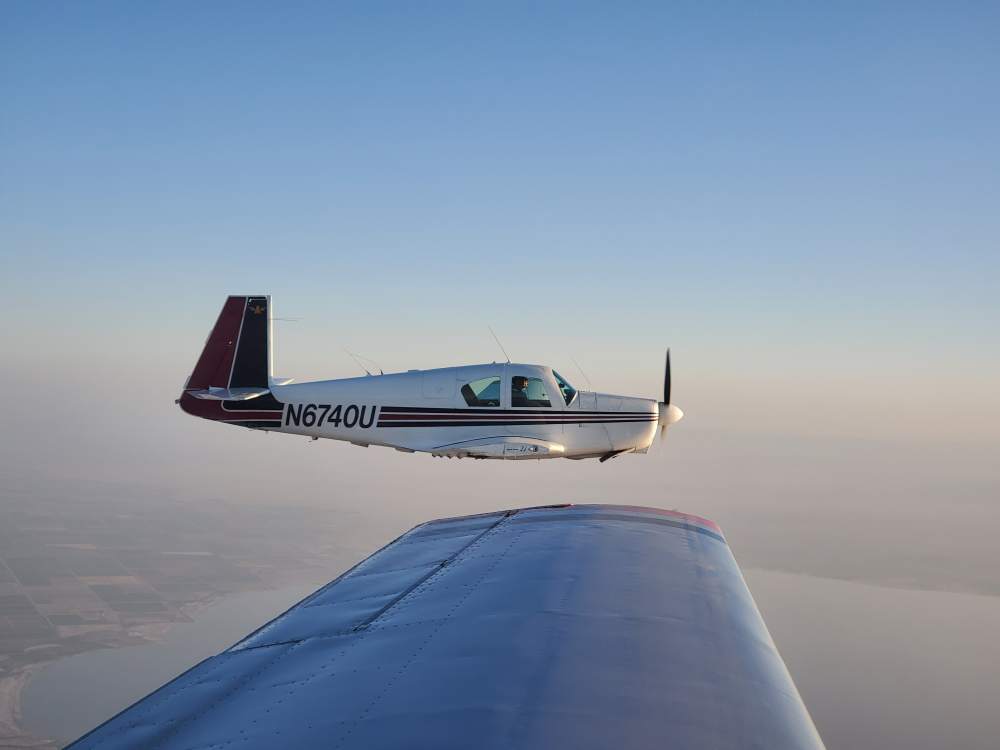
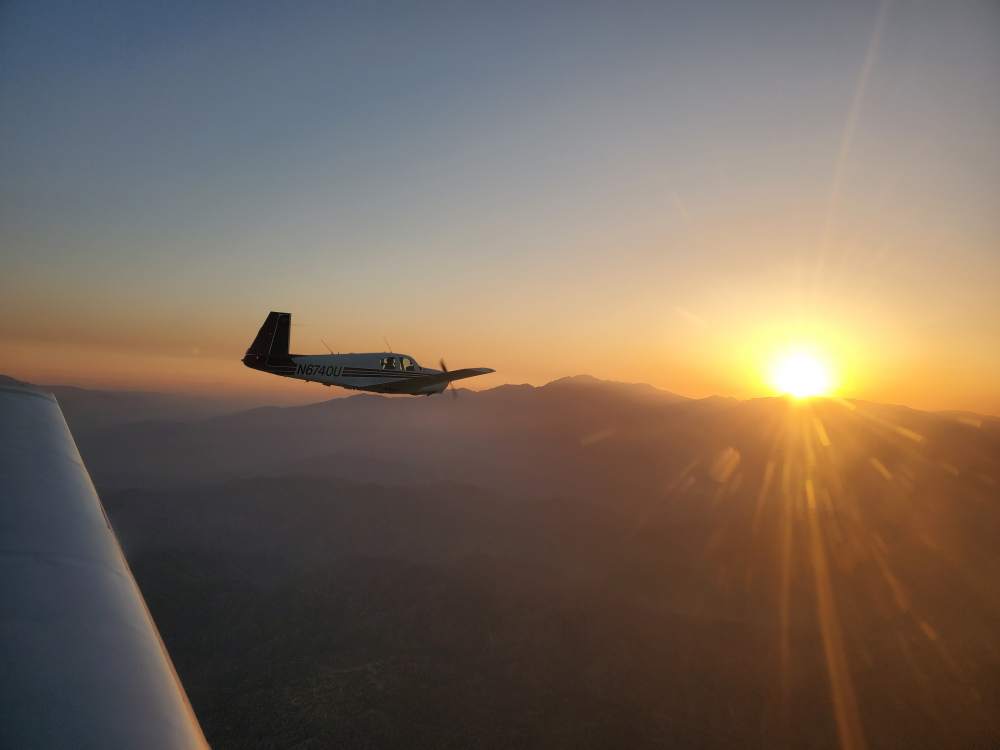
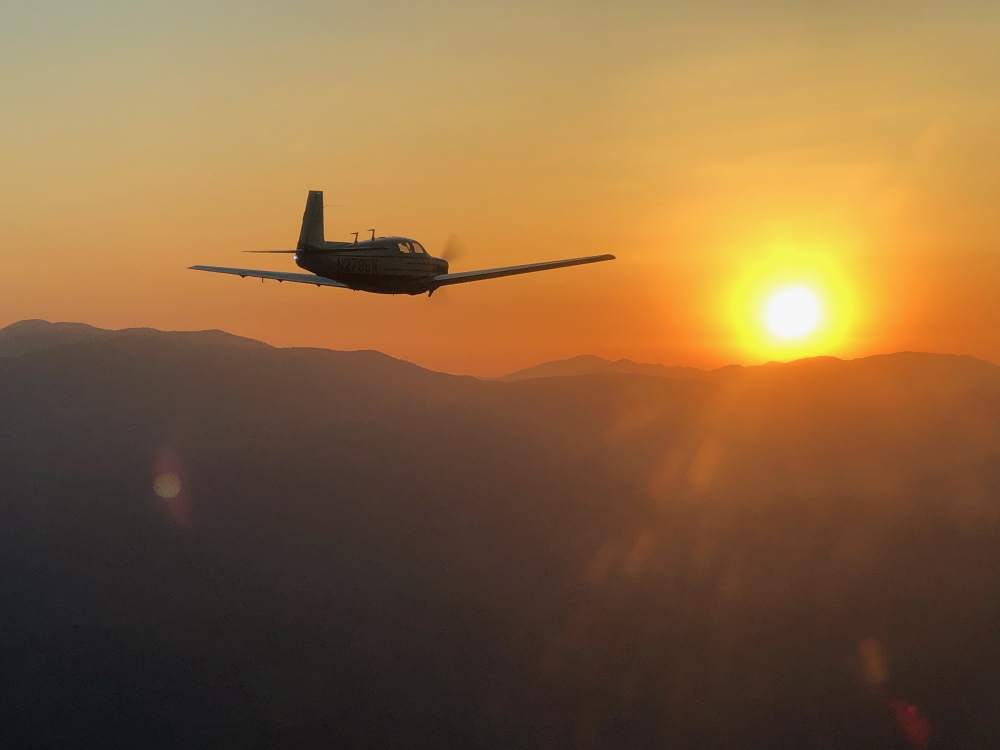
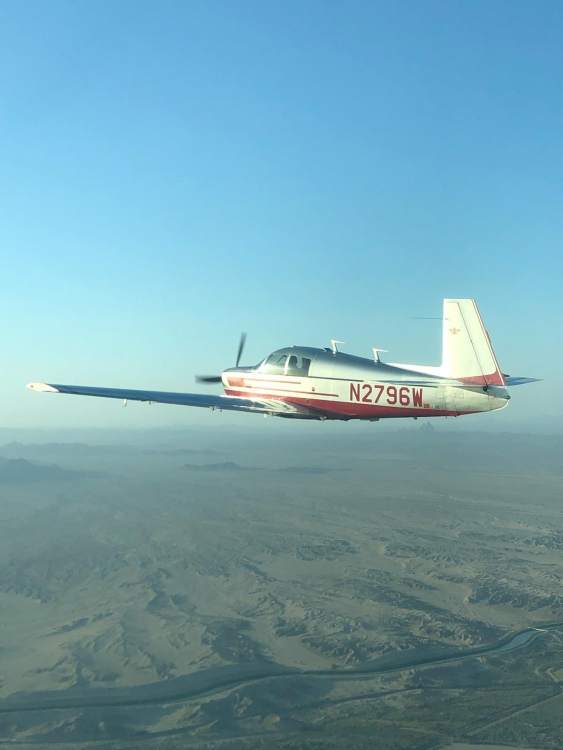
.thumb.jpg.faec24e7799a92f106ed2247ce384695.jpg)
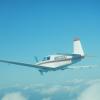
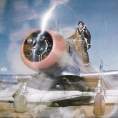


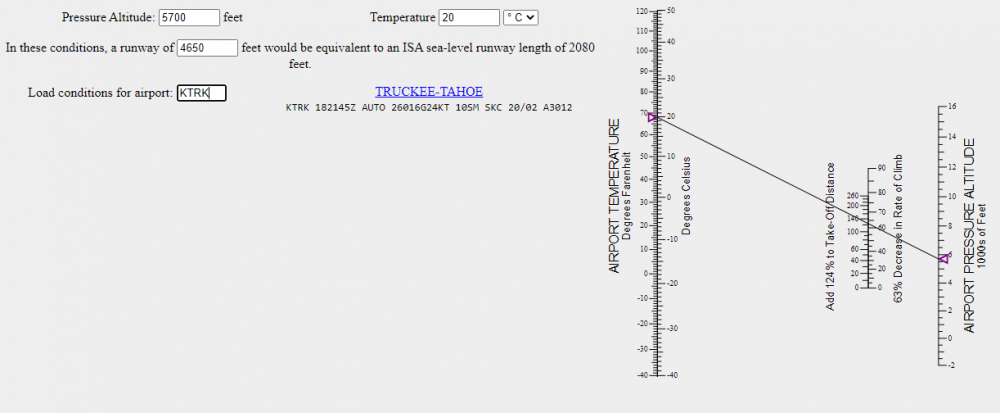




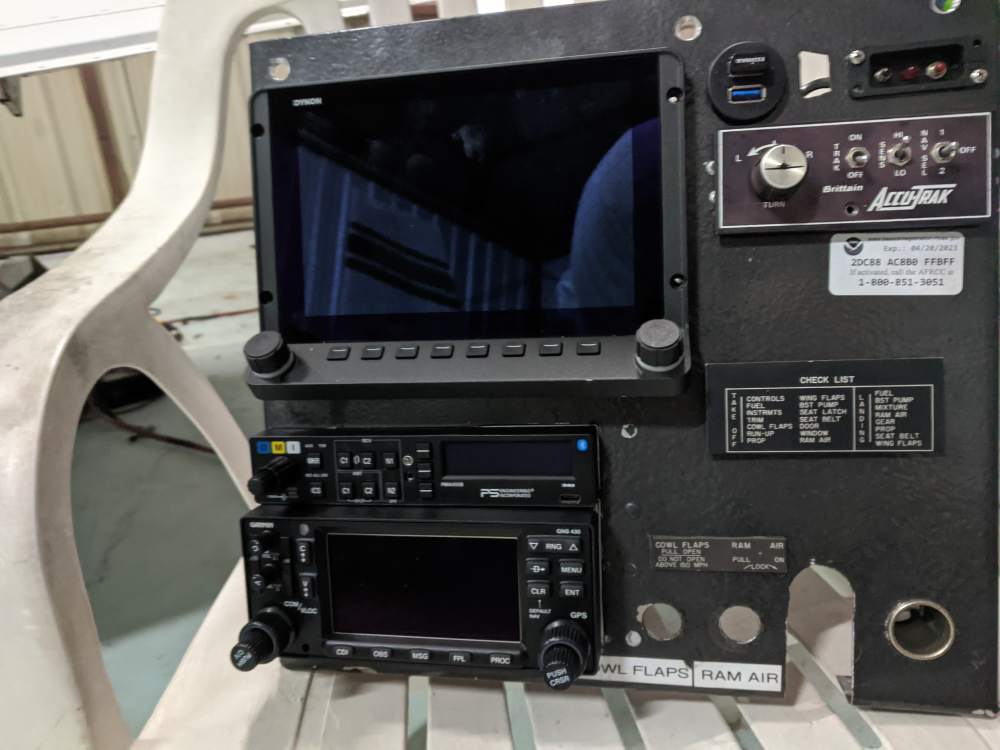

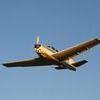
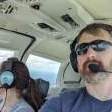


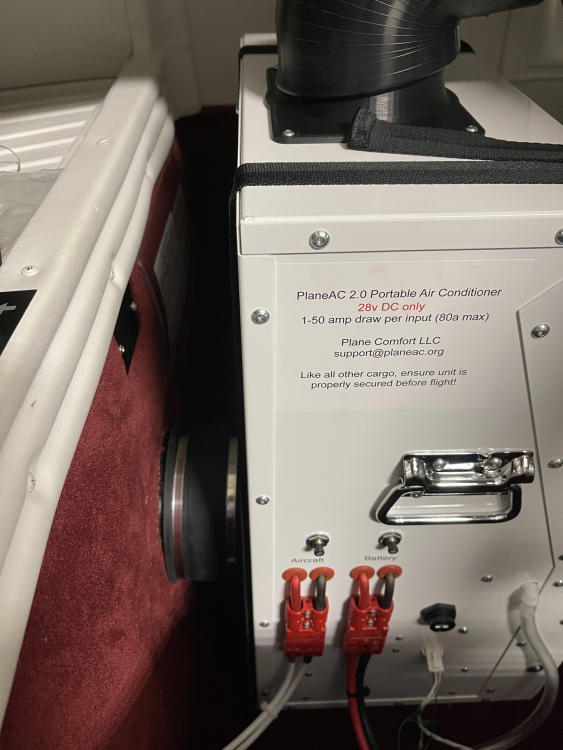
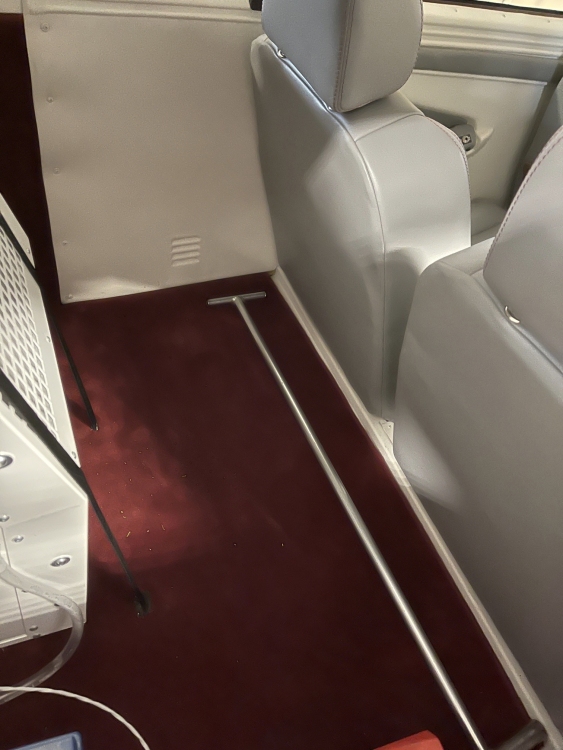
.thumb.jpg.44bc5ad17b44ec09b48bdca2a82f7a76.jpg)

